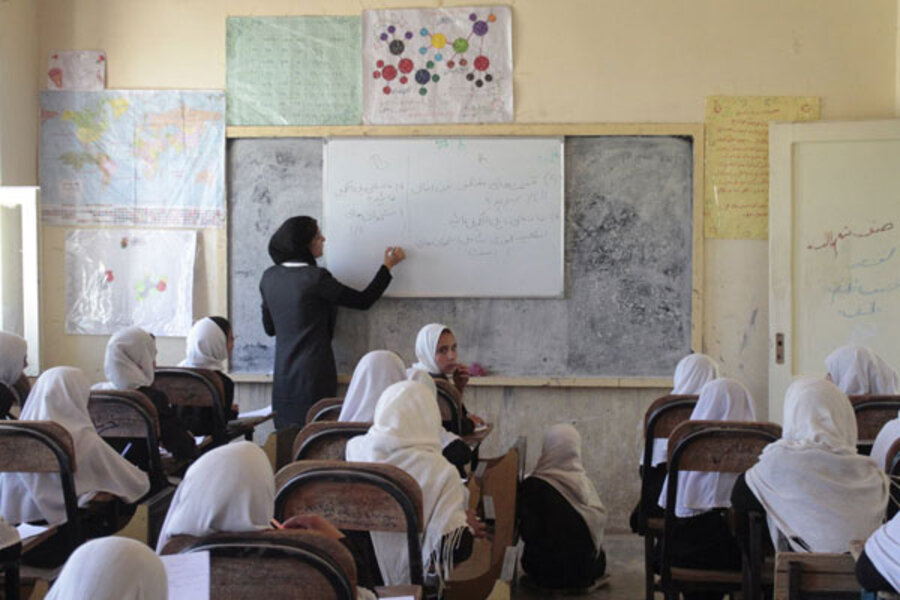How US aid lifts Afghans
Loading...
The United States recently designated Afghanistan a “major non-NATO ally,” a move that will make it easier for the Afghan government to acquire defense equipment from the US and that could ultimately boost the nation’s emergence as a democracy.
How has Afghanistan fared in terms of converting other forms of American assistance to measurable social advancement?
The US Agency for International Development met July 7-9 in Tokyo with some 70 partners on Afghanistan’s transition. The group looked ahead, and also back at the gains of the past 10 years. Some USAID claims, particularly on health, have been challenged in the past. And observers maintain that whether these gains are sustainable remains unknown.
Some progress cited by the organization at the Tokyo summit:
Education:
•Since 2006, the US has funded $316 million in education initiatives, increasing the number of teachers from 20,000 in 2002 to over 175,000 today, 30 percent of whom are women.
•In 2002, an estimated 900,000 boys were in school and virtually no girls. Now there are 8 million students enrolled in school, with nearly 40 percent girls.
Health:
•Since 2006, the US has invested nearly $643 million in health-care initiatives, training some 22,000 health-care workers.
•Access to basic health services (ability to reach a facility within one hour by foot) has risen from 9 percent in 2001 to more than 60 percent today.
Economic infrastructure:
•Since 2006, the US has funded $1.6 billion in infrastructure projects and $386 million in agriculture development.
•In 2002, only 6 percent of Afghans had access to reliable electricity. Today 18 percent do, and more than 2 million people in Kabul now benefit from electric power 24 hours a day.
Democracy and governance:
•Since 2006, the US has funded $1.8 billion in rule of law and counternarcotics programs.
•The Justice Sector Support Program has trained more than 14,000 Afghan investigators, prosecutors, defense attorneys, and judges since its launch in 2004.







